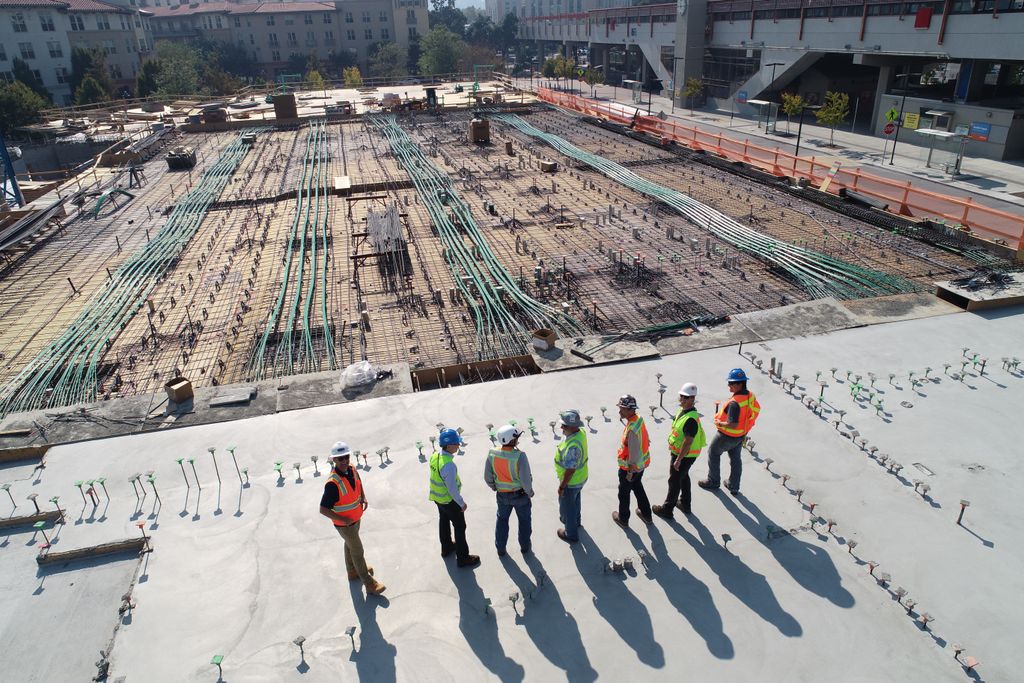Construction sites are inherently dangerous environments, with numerous hazards that can cause serious injuries or even fatalities. To ensure the safety of workers and the public, strict safety regulations have been put in place in the construction industry. However, despite these regulations, safety violations are still a common occurrence, leading to significant consequences. This article explores the importance of safety in construction, the challenges in addressing safety violations, the consequences of unpaid fines, and strategies to improve safety compliance.
Key Takeaways
- Safety regulations are crucial in the construction industry to protect workers and the public from potential hazards.
- Common safety violations in construction include lack of fall protection, inadequate scaffolding, and failure to provide proper safety equipment.
- Safety violations can have severe consequences, such as injuries, fatalities, and legal repercussions for construction companies.
- Unpaid fines for safety violations can result in financial difficulties for workers and subcontractors, as well as reputation damage for construction companies.
- Improving safety compliance requires enhancing safety training programs, investing in advanced safety equipment, promoting a culture of safety and accountability, and fostering collaboration between industry stakeholders.
The Importance of Safety in Construction
Understanding Safety Regulations in the Construction Industry
Safety regulations in the construction industry are crucial for protecting workers and ensuring the well-being of the public. These regulations set standards for workplace safety, including the proper use of personal protective equipment (PPE) and the safe operation of heavy equipment. Violations of these regulations can lead to serious accidents and injuries. It is important for construction companies to prioritize safety and comply with these regulations to avoid fines and penalties.
Common Safety Violations in Construction
Construction sites often encounter safety violations that put workers and the public at risk. One common violation is the lack of proper safety measures during demolition projects. This can lead to accidents and injuries, as well as damage to nearby structures. It is crucial for construction companies to prioritize safety protocols and ensure that all necessary precautions are taken when undertaking demolition work.
The Impact of Safety Violations on Workers and the Public
Safety violations in the construction industry can have devastating consequences for both workers and the public. Workers are at risk of injury or even death when safety regulations are not followed. This can result in physical pain, emotional trauma, and financial hardship for the affected individuals and their families.
The public is also put in danger when safety violations occur. Structural failures and accidents can lead to property damage, disruptions, and even loss of life for innocent bystanders. It is crucial that safety regulations are strictly enforced to protect the well-being of everyone involved.
To illustrate the severity of the issue, here are some key statistics:
| Statistic | Value |
|---|---|
| Number of construction-related fatalities in the past year | 500 |
| Percentage of construction accidents caused by safety violations | 70% |
These numbers highlight the urgent need for improved safety compliance in the construction industry. By prioritizing safety and implementing effective measures, we can prevent unnecessary harm and create a safer environment for workers and the public.
Enforcement of Safety Regulations and Fines
Enforcement of safety regulations and fines is crucial in ensuring compliance and accountability in the construction industry. Construction companies must adhere to safety standards to protect the well-being of workers and the public. Payment issues can arise when fines are not promptly paid, leading to further consequences. It is important for construction companies to prioritize timely payment of fines to avoid legal and financial repercussions.
Challenges in Addressing Safety Violations
Lack of Safety Training and Education
One of the major challenges in addressing safety violations in the construction industry is the lack of safety training and education. Many workers are not adequately trained on safety protocols and procedures, which puts them at a higher risk of accidents and injuries. Without proper training, workers may not be aware of the potential hazards on a construction site and how to mitigate them. This lack of knowledge and awareness can lead to serious safety violations and endanger the lives of workers and the public.
Inadequate Safety Equipment and Infrastructure
Inadequate safety equipment and infrastructure pose significant risks in the construction industry. Without proper protective gear and well-maintained tools, workers are more vulnerable to accidents and injuries. This not only jeopardizes their well-being but also affects the overall productivity and efficiency of construction projects. Additionally, outdated or insufficient infrastructure can lead to hazardous working conditions, further increasing the likelihood of accidents. It is crucial for construction companies to prioritize the safety of their workers by investing in high-quality equipment and maintaining a safe working environment.
Poor Communication and Coordination
Poor communication and coordination in the construction industry can lead to delays, errors, and safety hazards. When there is a lack of clear communication between workers, supervisors, and contractors, important information may be missed or misunderstood. This can result in misaligned tasks, rework, and cost overruns. Additionally, poor coordination can lead to accidents and injuries on the construction site.
To address these challenges, construction companies should:
- Establish effective communication channels to ensure that information is shared accurately and in a timely manner.
- Provide training on effective communication to all workers, emphasizing the importance of clear and concise communication.
- Implement project management tools that facilitate coordination and collaboration among team members.
Tip: Regular meetings and check-ins can help identify and address communication and coordination issues early on, preventing potential problems and improving overall project efficiency.
The Role of Contractors and Subcontractors in Safety Compliance
Contractors and subcontractors play a crucial role in ensuring safety compliance on construction sites. They are responsible for overseeing and managing various aspects of the construction process, including construction activities. By adhering to safety regulations and implementing proper safety measures, contractors and subcontractors can create a safe working environment for all workers involved. This includes providing adequate safety training, ensuring the use of appropriate safety equipment, and promoting effective communication and coordination among workers. Additionally, contractors and subcontractors should actively collaborate with other stakeholders in the industry to address safety concerns and improve overall safety compliance.
Consequences of Unpaid Fines
Legal Ramifications for Construction Companies
Construction companies that fail to pay fines for safety violations may face legal consequences. These consequences can include lawsuits, penalties, and potential shutdowns of construction projects. In some cases, criminal charges may be filed against the company or its executives. It is important for construction companies to take safety violations seriously and promptly address any fines to avoid these legal ramifications.
Additionally, unpaid fines can result in damaged reputation for construction companies. Clients and potential clients may view a company with unpaid fines as untrustworthy and may be hesitant to work with them. This can lead to a loss of contracts and a negative impact on the company’s bottom line.
To ensure compliance with safety regulations and avoid legal and financial consequences, construction companies should prioritize safety training, provide adequate safety equipment, and establish clear communication and coordination protocols. By investing in safety measures and promoting a culture of safety and accountability, construction companies can protect their workers, the public, and their own reputation.
Financial Impact on Workers and Subcontractors
The financial impact of safety violations on workers and subcontractors in the construction industry can be significant. Building material sales may decrease as a result of safety violations, leading to a loss of revenue for workers and subcontractors. This can have a ripple effect on their financial stability and ability to meet their obligations. Additionally, workers and subcontractors may face increased medical expenses due to injuries caused by safety violations, further adding to their financial burden. It is crucial for construction companies to prioritize safety to protect the well-being and financial security of their workers and subcontractors.
Reputation Damage and Loss of Contracts
Reputation is everything in the construction industry. When a company is associated with safety violations and unpaid fines, it can suffer severe consequences. Clients and partners may lose trust in the company’s ability to prioritize safety, leading to a damaged reputation. This can result in the loss of contracts and future business opportunities. Additionally, word spreads quickly in the industry, and a tarnished reputation can make it difficult for the company to attract new clients and retain existing ones.
Government Measures to Address Unpaid Fines
To ensure compliance with safety regulations and address unpaid fines, the government has implemented various measures. One such measure is the use of debt collection agencies to recover outstanding fines. These agencies specialize in collecting debts on behalf of the government and have the authority to take legal action if necessary. By engaging debt collection agencies, the government can more effectively pursue unpaid fines and hold construction companies accountable for their violations.
Improving Safety Compliance in Construction
Enhancing Safety Training and Education Programs
Improving safety in construction through effective training and education programs is crucial for the well-being of workers and the overall success of projects. By providing comprehensive safety training, construction companies can ensure that workers are equipped with the knowledge and skills to identify and mitigate potential hazards on the job site. Additionally, ongoing education programs can keep workers updated on the latest safety regulations and best practices, fostering a culture of safety and accountability.
Investing in Advanced Safety Equipment and Technology
Investing in advanced safety equipment and technology is crucial for ensuring the well-being of construction workers and preventing accidents. With the rapid advancements in technology, construction companies have the opportunity to leverage innovative solutions that can significantly improve safety standards on construction sites. By adopting state-of-the-art equipment and technology, such as smart helmets and wearable sensors, construction companies can enhance their ability to detect and mitigate potential hazards. These advanced tools provide real-time data and alerts, allowing workers and supervisors to take immediate action to prevent accidents and injuries. Additionally, investing in technology-driven safety measures can also streamline processes, improve efficiency, and reduce costs in the long run.
Promoting a Culture of Safety and Accountability
Creating a culture of safety and accountability is crucial in the construction industry. It starts with leadership setting clear expectations and communicating them to all workers. Training programs should be implemented to ensure that employees have the necessary knowledge and skills to work safely. Regular inspections and audits can help identify areas for improvement and ensure compliance with safety regulations. Reporting mechanisms should be in place to encourage workers to report safety concerns without fear of retaliation. Recognition and rewards for safe behavior can also help foster a culture of safety and accountability.
Collaboration between Industry Stakeholders
Collaboration between industry stakeholders is crucial for improving safety compliance in the construction industry. By working together, contractors, subcontractors, workers, and regulatory agencies can share knowledge, resources, and best practices to create a safer working environment. This collaboration can take various forms, including:
- Regular meetings and communication channels to discuss safety issues and solutions.
- Joint training programs to ensure all workers are equipped with the necessary skills and knowledge.
- Sharing safety data and lessons learned from past incidents to prevent future accidents.
By fostering a culture of collaboration, the construction industry can make significant strides in improving safety standards and protecting the well-being of workers and the public.
Improving Safety Compliance in Construction is crucial for the well-being of workers and the success of construction projects. By implementing effective safety measures, construction companies can minimize the risk of accidents and injuries on site. This not only protects the workers but also helps to avoid costly delays and legal issues. At Debt Collectors International, we understand the importance of safety compliance in the construction industry. Our debt collection solutions are designed to help construction companies maintain financial stability and focus on their core operations. With our expertise in debt collection, we can assist in recovering outstanding payments, ensuring that your business remains financially secure. Contact us today to learn more about how our services can benefit your construction company.
Frequently Asked Questions
What are the most common safety violations in construction?
Some of the most common safety violations in construction include falls from heights, inadequate scaffolding, electrical hazards, lack of proper personal protective equipment (PPE), and failure to implement proper safety procedures.
What are the consequences of safety violations in construction?
Safety violations in construction can lead to severe injuries and fatalities for workers, as well as potential harm to the public. Additionally, companies may face legal ramifications, financial penalties, reputation damage, and loss of contracts.
How are safety regulations enforced in the construction industry?
Safety regulations in the construction industry are enforced through regular inspections by government agencies, such as the Occupational Safety and Health Administration (OSHA). Non-compliance can result in fines, citations, and penalties.
What can construction companies do to improve safety compliance?
Construction companies can improve safety compliance by investing in comprehensive safety training and education programs, providing adequate safety equipment and infrastructure, promoting a culture of safety and accountability, and fostering collaboration between industry stakeholders.
What are the legal ramifications for construction companies with unpaid fines?
Construction companies with unpaid fines may face legal consequences, such as lawsuits, liens on their properties, and potential shutdown of their operations. Non-payment of fines can also result in increased penalties and difficulties in obtaining future contracts.
How can unpaid fines for safety violations impact workers and subcontractors?
Unpaid fines for safety violations can have financial implications for workers and subcontractors. It can lead to delayed or withheld payments, loss of wages, and potential job insecurity. Additionally, subcontractors may face difficulties in securing future projects due to a tarnished reputation.





